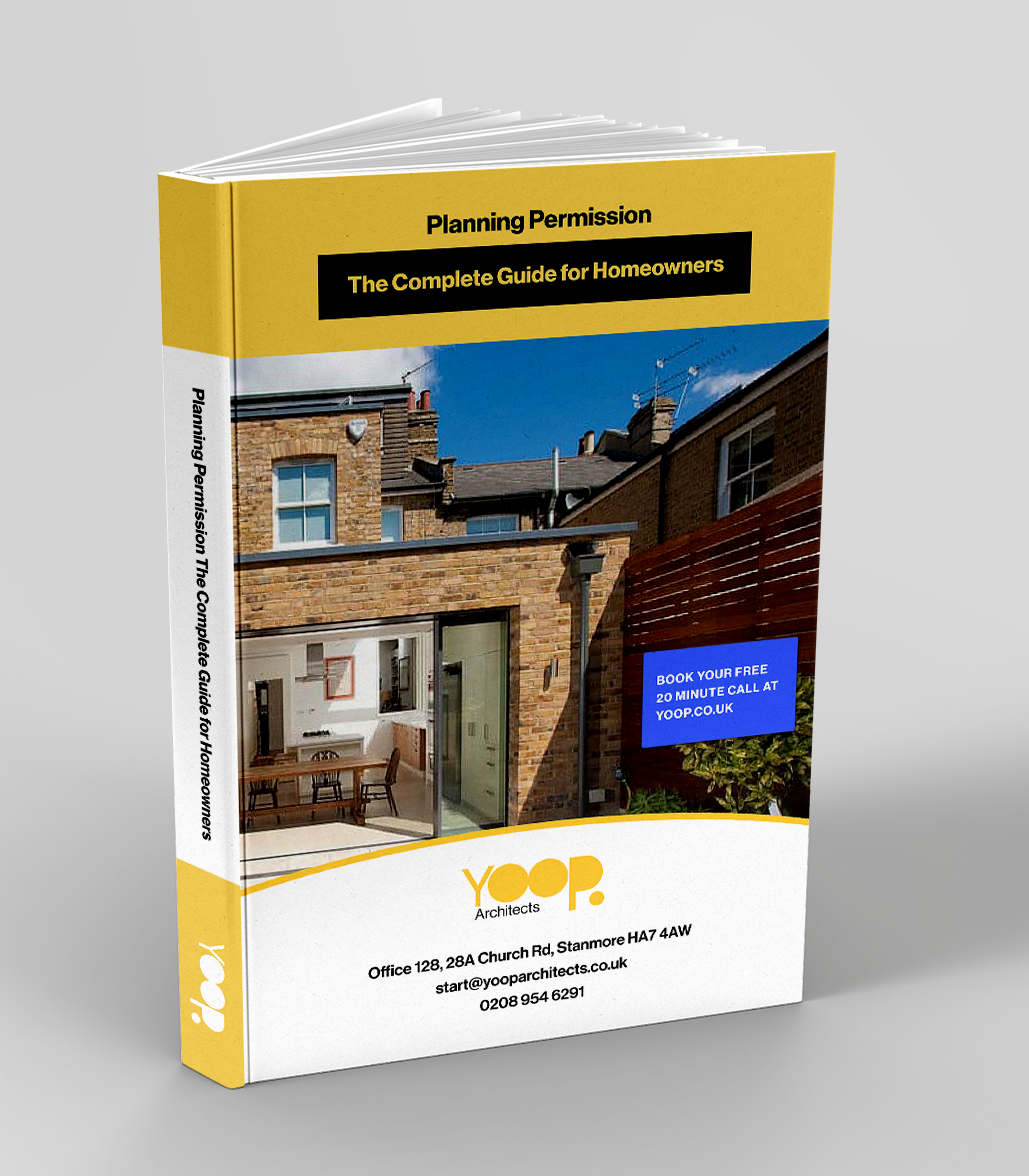
Loft Conversion Planning Permission
The loft conversion is one of the most preferred home improvements across the UK. It enables the homeowner to utilize existing space, enhance property value, and create a functional area without extensive civil works. However, you must understand the planning permission before embarking on a loft conversion project. This said, this guide from Yoop Architects will guide you through everything you need to know.
Do Loft Conversions Require Planning Permissions?
Generally speaking, most loft conversions are almost always granted automatic planning permission without the conventional planning permission process because of Permitted Development Rights. These rights allow the homeowner to do specified development improvements to the property without having to go through the process of applying for planning approval. However, there are restrictions, and your project must satisfy specific conditions that would allow it to be presented as permitted development.
Most types of loft conversion do not require planning permission and can be achieved via permitted development, as long as the extension complies with the following limits and conditions:
(Source – planningportal.co.uk)
- A volume allowance of 40 cubic metres additional roof space for terraced houses*
- A volume allowance of 50 cubic metres additional roof space for detached and semi-detached houses*
- No extension beyond the plane of the existing roof slope of the principal elevation that fronts the highway
- No extension to be higher than the highest part of the roof
- Materials to be similar in appearance to the existing house
- No verandas, balconies or raised platforms
- Side-facing windows to be obscure-glazed; any opening to be 1.7m above the floor
- Roof extensions not to be permitted development in designated areas**
- Roof extensions, apart from hip to gable ones, to be set back, as far as practicable, at least 20cm from the original eaves
- The roof enlargement cannot overhang the outer face of the wall of the original house.
*Bear in mind that any previous roof space additions must be included within the volume allowances listed above. Although you may not have created additional space a previous owner may have done so.
**Designated areas include national parks and the Broads, Areas of Outstanding Natural Beauty, conservation areas and World Heritage Sites.
Loft conversion rights under permitted development.
Permitted Development allows you to carry out a loft conversion without planning permission if:
It does not exceed:
- 40 cubic meters additional volume for terraced houses.
- 50 cubic meters for detached or semi-detached houses.
The loft doesn’t extend beyond a roof plane that runs along the front of the house. None of the loft extension protrudes beyond the height of the existing roof.
Materials used will be the same as used in the existing property.
No part of the loft conversion is made into a balcony, veranda, or raised platform, or has side-facing windows without obscure glazing.
The property is not included in:
- A Conservation Area.
- A National Park.
- A Listed Building or similar protected zones.
Your project likely falls within these criteria and will not require planning permission.
When is Planning Permission Not Required for a Loft Conversion?
You will require planning permission if:
- The loft conversion exceeds the volume limits under permitted development.
- You want to make structural alterations to give the roof a different shape, such as a big dormer.
- Your property is located in a restricted area (such as a Conservation Area).
- You want to install a balcony or terrace.
The appearance of the proposal is very different from that of the existing building.Planning permissions are also required for flats, maisonettes, and commercial buildings since they are not covered under Permitted Development Rights.
Inside this easy to read free guide, we will teach you the key things you need to know about planning permission.
Loft Conversions Achieved with Permitted Development
Room Loft Conversion
A room loft conversion is where you board out the loft and add a staircase. Maybe add a few skylight windows in the slope of the roof. You would require a good sized loft with good head height.
Prices start from £15,000
Dormer Loft Extension
A dormer loft extension is where a big box is typically added to the rear of the roof. This gives lots more space. Typically created via permitted development.
Prices start from £20,000 or from £35,000 with the inclusion of an en suite
Hip to Gable Roof Extension
A hipped roof is when all four sides of the roof slope in towards the middle. The loft space is not very good. A gabled roof is like a roof of a terraced house – two sides of the roof slope and the other two sides have a wall which go all the way up to the ridge (top of the roof). The gable roof is good for loft extensions.
There is a permitted development where you can do a hip to gable extension – usually on a semi detached property. Councils do not like this type of development as it will unbalance a semi detached pair but if done correctly at permitted development, the council can not stop it.
Prices start from £25,000
The Procedure for Planning Permission Applications
In case the loft conversion requires planning permission, here is the full description of what it entails.
Architect Professional Consultation
Getting your loft conversion done by experienced architect Yoop Architects ensures that the design adheres to local authority requirements. They could look into your property, give you some design options, and prepare you for application.
How to prepare the Application
When you have a proposed loft conversion, submit well-detailed drawings of your project to your local council. These include the following items: existing and proposed floor plans, elevations and roof plans, and details of materials and finishes. Submission of Application. Please submit your planning permission application online through the Planning Portal or send it electronically to your local council.
Reviewing period.
On average, it takes 8 weeks for the local authority to review and make a decision on your application.
Decision.
Once you are approved, you have a go signal to carry out your intended purposes for the loft conversion; if denied, however, you may either change the plans and re-apply or appeal the decision.
Building Regulations Approvals
There may be certain loft conversions that do not apply for planning permission but need approval under the Building Regulations. The Building Regulations establish and maintain structural safety and integrity, fire safety, energy conservation, and occupant comfort in a conversion.
Some of the important aspects included in the Building Regulations are as follows:
Structural Stability – Adequate strength of roof and floors to support the extra load resulting from Lifetime Load.
Provision for Escape: Someone escaping a fire goes out through safe routes, smoke alarms, and the use of fire-resisting materials during construction.
Insulation: Here both thermal and sound insulation meet criteria considering energy efficiency.
Safe access to the new loft space through a staircase design.
Your appointed Building Control Officer will check the progress of work periodically to ensure compliance.
If your extension exceeds the limits and conditions set out in the permitted development legislation, then you will require planning permission.
Types of loft conversions that usually require planning permission
‘Raising the Roof’ or Changing the Roof Structure
If the head height is not enough, altering the roof can be achieved via planning permission but can be difficult. The planners may suggest it will be incongruous to the original house as it may look different to the adjacent housing. Where it maybe possible is when houses are on a sloping street and ridge heights are not related to each other. Can be costly as it required a new roof.
Prices start from £40,000
What Can Yoop Architects Do For You
The loft conversion specialists at Yoop Architects provide services covering the whole of North London, and at times beyond. Here are some ways in which we can assist you:
Design Expertise
Our design is a tailored and bespoke plan that gives you what your lifestyle requires, taps the loft space to glow without being out of keeping with the rest of the house.
Planning Support
We can take you through the different stages of planning and the requirements your project must meet with regard to the nature of the plans.
Building Regulations Compliance
Free from all Building Regulation compliance issues, we handle surveyors’ coordination and other aspects concerning whether or not your loft conversion meets the standards.
Easy Management
We manage everything from initial consultations to project finishing, contractors, and construction.
Frequently asked Questions about Loft Conversion Permission
1. How much does planning permission cost?
The application fee for planning permission in England is about £206 for a single dwelling. Some additional costs may apply due to drawings and professional advice.
2. What would happen if I continued even without planning permission?
Undertaking a loft conversion would mean undertaking enforcement action asking you to undo the work. This may also involve some legal issues in selling the property.
3. Can I apply for retrospective planning permission?
If your loft conversion is already completed, you can apply for retrospective planning permission. But, without any guarantee.
Conclusion
You can increase the value as well as functionality of your home by changing the loft to become more useful. However, be sure to study the relevant planning permission conditions to be followed for the smooth operation of your project. For any assistance with planning permission or designing your dream loft space, feel free to talk to Yoop Architects.
Contact today to start a loft conversion journey with confidence as we shall help create a stunning space that is just as practical!
FREE EXPERT HELP TODAY
Thinking of your dream home improvement or how to start your project?
Need your planning questions answered? Talk to an expert today.
Book a FREE 20 Minute Call with one of our home improvement Architects.


